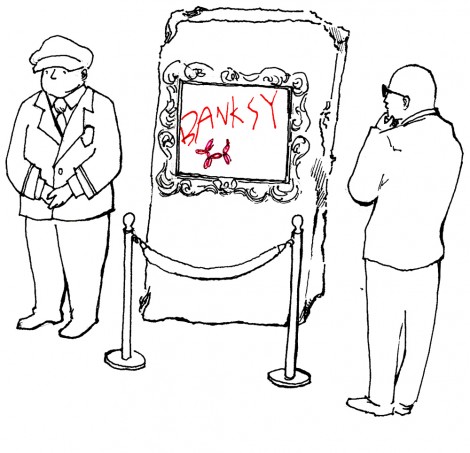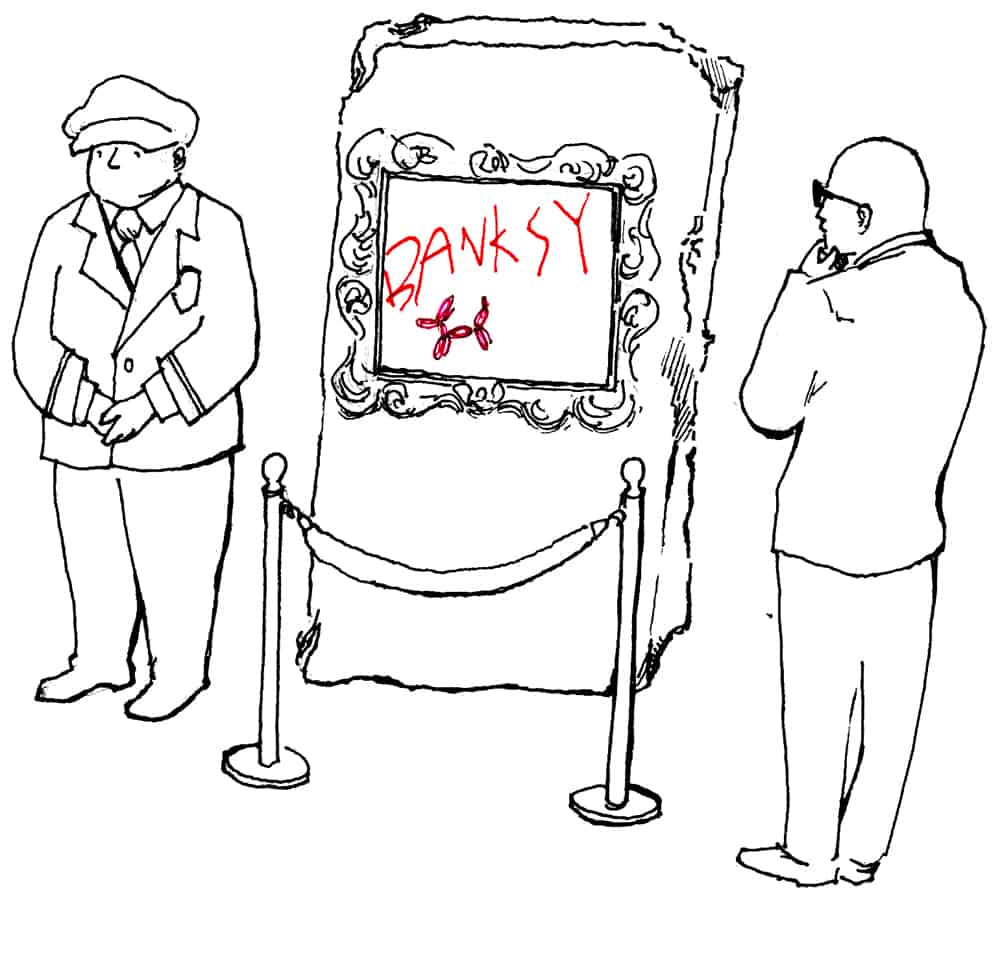According to developer Menkes, which is going out of its way to save a slab of concrete from the old OPP Headquarters at 90 Harbour Street, graffiti is an invaluable art form. The slab, however, doesn’t depict your everyday profanity-laced anarchist rant, but rather a stencil of a uniformed police officer walking a pink balloon dog. What would motivate a developer to preserve an illustration parodying Toronto’s police force? Well, when the artist is the world-renowned Banksy, people tend to take notice.

MARI ZHOU/THE VARSITY
Banksy, the anonymous British guerrilla artist has gained enormous respect and popularity for his satirical and provocative epigrams. Stopping in Toronto in 2010, the artist left his mark on several buildings, signs and even a fallen tree while promoting his documentary, Exit Through the Gift Shop. The film documents the artist’s illegal, but innovative pursuits. The Harbour Street illustration, as well as another piece located at Church and the Esplanade (behind a Plexiglas screen added by the building’s owner to protect the illustration), are the only two remnants of Banksy’s visit to Toronto, with five other pieces quickly painted over or destroyed.
Menkes, which is developing the new condominium, Habour Plaza, on the footprint of the demolished police headquarters claims to have saved Banksy’s piece strictly for public enjoyment, rather than for aesthetic reasons. It’s hard to determine the company’s real motives, however, Menkes will undoubtedly relocate the piece to a high traffic pedestrian walkway within the condominium in an attempt to expose residents to Banksy’s work. However, if the goal of the project is public enjoyment, why situate the piece of art within a strictly private space? In order to achieve maximum exposure and public awareness, wouldn’t it make more sense to exhibit the piece in a public place, somewhere outside the condominium, like Banksy had originally planned?
Perhaps Menkes’ decision to sequester the piece was motivated by an English auction, wherein one of Banksy’s epigrams reportedly sold for over £200,000. The illustration, then, could boost interest in the condo and possibly attract a much different and far less mainstream group of prospective buyers.
No matter the motivation of the company, there is always the question of ownership and context, which is a grey area besieging guerilla art. Context, both physical and social, is of obvious importance to Banksy (stencilling a police officer on the OPP headquarters probably wasn’t a coincidence), who definitely intended for the satirizing portrait to be chuckled at by passing pedestrians, rather than to be examined within the museum-esque setting Menkes has proposed. Legally, the concrete slab, and whatever happens to be inscribed upon it, belongs to Menkes. But according to the street art counter-culture, which Banksy fostered and globally popularized, the illustration, was created for the public, and will always belong to the public.


